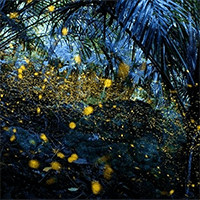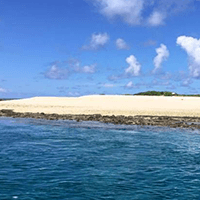- Age 3~Age 100
- Within 1 hour
- 10:00 / 13:00 / 15:00
Waplus Nara is a 2-minute walk from JR Nara Station and a 10-minute walk from Kintetsu Nara Station. It is in a very convenient location. Come empty-handed ♪ We offer a special time to enjoy traditional Japanese beauty to your heart's content. Experience the traditional beauty of Japan through the tea ceremony. While learning the spirit of tea ceremony, you will also savor the depth of Japanese culture. You can spend an elegant time with Japanese sweets. ~Experience process~ History talk → Tea talk → Tea making → Japanese sweets and tea *Souvenirs available
- Age 6~Age 75
- 1~2 hours
- 10:00 / 12:00 / 14:00 / 16:00 / 18:00 / 20:00
-Tea CeremonyZen is alive and well in traditional Japanese culture, and by learning the tea ceremony, you will learn etiquette, manners, beautiful gestures, and the spirit of hospitality. who will be treated with hospitality.- You will be asked to serve tea to the guests with an awareness of the mindset and manners of the tea master.-CalligraphyZen exists as a visual trace. “hane,” and “harai” will be taught.-Choose a Japanese kanji of your choice and practice writing it according to the stroke order.-With what you have learned so far in mind, write your chosen kanji on the calligraphy paper.
- Age 10~Age 70
- 2~3 hours
- 11:00 / 14:00 / 17:00 / 20:00
Calligraphy/Samurai Calligraphy/Tea Ceremony/which is related to ZenIaido and Armor, both of which are related to Bushido.This plan allows you to experience all of these.-Practice calligraphyLearn how to prepare yourself for calligraphy, and practice how to hold a brush and use tools.Practice basic brush strokes such as “tome”, “hane”, and “harai”.Choose a Kanji character and follow the stroke order to practice.-Samurai Calligraphy When a samurai foresaw his death, he reflected on his life and wrote down his last words on earth with a brush.-Tea CeremonyThe master of the tea ceremony prepares and powdered green tea to the guests.This is a great way to learn etiquette, manners, beautiful gestures, and the spirit of hospitality.-Samurai Sword Trial CuttingYou will learn how to use a sword and become aware of your self-respect and the responsibility of carrying a deadly weapon.Try your hand at slashing. Experience the best cutting edge in the world.-Wearing ArmorIn April 1615, the “Osaka Summer Battle” began. You, a member of Toyotomi's side, will wear a suit of armor and participate in the battle. You will be photographed on the grounds of Osaka Castle, pretending to be the b,
- Age 1~Age 70
- Over 6 hours on the day
- 08:40 / 09:50
✅Kiyomizu-dera Temple (Otowa Waterfall)✅Fushimi Inari Taisha Shrine (Thousand Torii Gates)✅Uji Byodo-in Temple Phoenix Hall◎Visit to the Tale of Genji Museum◎Includes Uji Matcha Experience~Schedule~【08:40】▼Depart from the National Cultural Theater【09:50】▼Depart from Kyoto Station Hachijo Exit【10:10】▼Kiyomizu-dera Temple Area (approx. 180 minutes, free time to visit, please pay your own admission fee)Kiyomizu-dera Temple|Nijozaka【13:30】▼Fushimi Inari Taisha Shrine (approx. 70 minutes, free time)【15:10】▼Uji (approx. 90 minutes, free time)Byodo-in Temple|Tale of Genji Museum |Long-established Uji Matcha Shop【16:40】▼After a fun day of touring, we headed back home. 【18:00】▼Arrived in the Shinsaibashi/Dotonbori area, tour ended▼Kiyomizu-dera Temple National Treasure World Heritage SiteA World Cultural Heritage Site and a popular tourist spot in Kyoto. Founded in 778, it is the oldest temple in Kyoto and a national treasure of Japan. Kiyomizu-dera offers different views in each season. In spring, attractive cherry blossoms bloom among the green leaves. In summer, the greenery is lush. In autumn, colorful autumn leaves can be seen. In winter, it is full of beautiful trees. It is ideal to visit any time. Kiyomizu-dera also holds light-up events in spring and autumn to show off the beauty of the temple. (Admission fee: 400 yen for adults, 200 yen for elementary and junior high school students) Please pay by yourself. ▼ A typical Kyoto landscape, a symbol of quiet Kyoto, Nijozaka and Yasaka Pagoda, photo shoot and check-in Hokan-ji is a temple of the Kennin-ji school of the Rinzai sect located in Higashiyama Ward, Kyoto City, Kyoto Prefecture. This mountain is called "Spiritual Eagle Mountain". The principal image is Yakushi Nyorai, and there is a legend that the founder was Prince Shotoku. The five-story pagoda is commonly known as "Yasaka Pagoda" and is a symbol of Higashiyama. ▼Fushimi Inari Taisha is famous for its thousand torii gates, and attracts many tourists from both Japan and abroad every year. In a survey conducted by the world's largest travel site, it has been ranked first in "Japan's most popular tourist spots for foreigners" for three consecutive years. Let's pray here for ourselves and our loved ones. The votive plaques at Fushimi Inari Taisha are also unique. They are in the shape of a white fox, and you can doodle them with various expressions depending on your imagination. ▼Uji For matcha lovers, Uji is a gourmet paradise. The streets are filled with the finest matcha ice cream and cakes, and even the soba noodles are green matcha green. For literature lovers, this is a paradise for the arts. Because the last ten chapters of The Tale of Genji, a literary masterpiece known as Dream of the Red Chamber in Japan, are set in Uji. Anyone who has read The Tale of Genji will want to come here to follow the love, hate, and revenge of Japanese aristocrats. This is a mixed tour, and participants come from all over the world.
- Age 5~Age 100
- 1~2 hours
- 10:00 / 13:30 / 16:30
Have you decided on your plan for today? We offer a program that allows you to experience three Japanese cultures at once. Why not try on a kimono, which is becoming less and less popular, and play the traditional Japanese instruments, the koto and shamisen? Then take a break with some matcha tea that you make yourself. How about experiencing Japan with the instructor's koto performance?
- Age 6~Age 75
- 1~2 hours
- 10:00 / 12:00 / 14:00 / 16:00
-Wagashi is traditional Japanese confectionery that expresses the seasons. Wagashi is strongly characterized by colorful designs and beautiful craftsmanship, each created by hand by artisans.-Learn about the history and culture of JapanWagashi is a unique food to Japan and reflects the Japanese spirit of appreciating the four seasons, and it is said to have a beauty that is similar to that of wabi and sabi.- “They are too beautiful to eat.The first thing that strikes you when you are confronted with wagashi is how beautiful they look. They are filled with a delicate and gentle charm that is immediately recognizable as handmade, expressing the four seasons.-They reflect the Japanese people's love of the four seasons and their sense of beauty.Wagashi value the “seasons” ” so much that we cannot talk about them without mentioning spring, summer, fall, and winter, and express the seasons through three elements: appearance (design), ingredients used, and names.- “Delicious” is written as beautiful taste.First , enjoy it visually, then imagine from the name, weave a story, and enter the world of taste. Wagashi is not something that is just served and then taken in a snap.
- Age 13~Age 90
- Over 6 hours on the day
- 10:00
We will guide you to Wakayama's historical sites, where the scenery remains unchanged from 400 years ago. Enjoy a special atmosphere in a place that has not been turned into a tourist spot. Enjoy Japanese food culture with vegan cuisine for lunch and matcha green tea and Japanese sweets at tea time.
- Age 15~Age 90
- 1~2 hours
- 10:30 / 13:00 / 16:00
How about trying on a kimono at Machiya Juku, a Japanese space and time near Higashi Chaya District, and enjoying the world that spreads out from a cup of tea? Escape from everyday life and step into a quiet tea room to discover a new side of yourself. It seems that there are not many houses with tatami mats these days, and the Japanese-style space of a machiya is nostalgic like grandma's house, and it will be fresh for young people. You can learn various Japanese gestures that are useful to remember, such as how to say hello, open and close the fusuma, how to walk and sit on the tatami. This is a Japanese lesson that will definitely come in handy when you are invited, in a slightly formal seat, or in a business setting. Why don't you experience it as a memory of your trip? Not only women but also men are welcome. [Experience flow] ① Dressing (about 30 minutes) ↓ ② How to enter the tea room, see the alcove, tools, how to walk (10 minutes) ↓ Follow the flow of the tea ceremony (about 40 minutes) ③ Have the main sweets ↓④How to have tea↓⑤How to have dried sweets↓⑥How to have tea
- Age 5~Age 100
- 1~2 hours
- 09:00 / 10:00 / 11:00 / 12:00 / 13:00 / 14:00 / 15:00 / 16:00 / 17:00
It is a plan that you can enjoy a full-fledged tea ceremony experience at Yatsugatake resort area "Kobuchizawa". You can also experience making green tea yourself. You can enjoy 2 matcha (light tea) clothes, fresh confectionery and dried confectionery.
若い頃に茶道をやっていましたが、社会人になって仕事が忙しく茶道から離れて10数年経ち、久しぶりに茶道を体験させて頂きました。だいぶ忘れていましたが、優しく教えて下さり、楽しめました。
- Age 7~Age 90
- 1~2 hours
Would you like to try calligraphy? After choosing your favorite characters from the sample and practicing, you can finish by writing them on colored paper and taking them home. You can also write your name in "Hiragana" on your work! After the calligraphy experience, we will provide you with matcha tea and Japanese sweets (nerikiri). If you would like to try making matcha tea, we will teach you, so it will be a rare opportunity to enjoy the matcha that you made yourself! Why not experience Japanese culture as one of the memories of your trip?
- Age 15~Age 100
- 1~2 hours
- 09:00 / 10:00 / 11:00 / 12:00 / 13:00 / 14:00 / 15:00 / 16:00 / 17:00
It is a plan that you can enjoy a full-scale tea ceremony experience at the resort area "Kobuchisawa" of Yatsugatake. You can enjoy dark tea and light tea and experience making matcha yourself. You can enjoy dark tea and namagashi, and light tea and dried sweets.
最近チェックしたプラン
Please wait a moment
![[Nara/JR Nara Limited Time Offer] Experience the traditional beauty of Japan through a tea ceremony with a souvenir includedの画像](https://img.activityjapan.com/10/57768/10000005776801_nVWBMD2C_3.jpg?version=1739080564)

![[By Osaka Castle] Hands-on class to learn Bushido & Zen with photoの画像](https://img.activityjapan.com/10/52543/10000005254301_2gpir8pD_3.jpg?version=1741009862)
![[From Osaka] Kyoto Day Trip | Visiting World Heritage Sites & Matcha Experience | Kiyomizu-dera Temple, Fushimi Inari Taisha Shrine, Byodo-in Temple in Uji | Includes a visit to the Tale of Genji Museum | Popular Matcha Experience Includedの画像](https://img.activityjapan.com/10/59135/10000005913501_1dhWswak_3.jpg?version=1746774725)
![[Tokyo, Shinjuku/Kagurazaka/Hatchobori] Enjoy Japan! Kimono dressing and koto experience class with matcha and Japanese sweetsの画像](https://img.activityjapan.com/10/57843/10000005784301_QMt7BQqn_3.JPG?version=1739425088)

![[Wakayama・Wakayama City] A tour to experience the scenery of the Edo period that still remains today along with the diary of painter Kawai Koume, who lived in the castle town! Recommended for women and couples!の画像](https://img.activityjapan.com/10/56478/10000005647801_AVWlGGNt_3.jpeg?version=1728023884)
![[Ishikawa / Kanazawa] Experience tea ceremony and Japanese gestures in kimonoの画像](https://img.activityjapan.com/10/49782/10000004978201_atFOJjl6_3.png?version=1689662652)
![[Yamanashi, Kobuchizawa] Authentic tea ceremony experience course. Anyone from beginners to experienced people can participate.の画像](https://img.activityjapan.com/10/22463/10000002246301_v1tbrqdj_3.JPG?version=1738564390)
![[Fukuoka・Sakura-namiki] Calligraphy experience with matcha and Nerikiri sweets ♪ Come empty-handedの画像](https://img.activityjapan.com/10/59437/10000005943701_ORnmMKnB_3.jpeg?version=1748395924)
![[Yamanashi / Kobuchisawa] Authentic tea ceremony experience course + I want to drink dark tea!の画像](https://img.activityjapan.com/10/43048/10000004304801_F0nwSSgV_3.jpg?version=1657021991)







